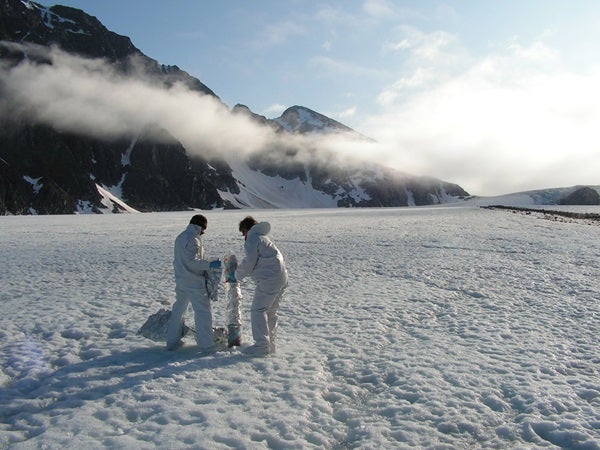Two scientists traveled to one of the coldest places on Earth to help them understand how life could exist on other planets in our solar system.
Liane Benning from the University of Leeds in the United Kingdom and Dominique Tobler from the University of Glasgow in Scotland traveled to Ny-Alesund on the island of Svalbard to investigate how extremophiles — organisms that thrive in harsh conditions — first colonized snow and ice.
The team will spend 2 weeks on Svalbard from August 6-20 as part of the Europlanet Research Infrastructure’s Transnational Access Program. The expedition is part of the larger international Arctic Mars Analog Svalbard Expedition (AMASE) project, which uses extreme environments on Earth as a test bed for technology that will be used on future NASA and European Space Agency (ESA) “Search for Life” missions to Mars.
“Glacial snow and ice are a good analog for ice and frost-covered ground at the martian poles or other icy bodies in the solar system, like Europa,” said Benning.
“Organisms that live here have evolved to thrive with very little food, large temperature fluctuations, dehydration, and high levels of UV radiation,” said Benning. “For example, snow algae make carotinoids pigments that protect them from UV radiation and cause the snow to turn bright red.”
“If we can learn more about how life can form and thrive in these areas, and the survival strategies they adopt, it gives us a better chance of detecting life on other planets with similarly extreme conditions,” said Benning.
To date, studies of microorganisms in the cryo-world have focused on life found in sediment-rich subglacial ice or in melt holes on the surface. Scientists have not studied signs of life present in surface ice and snow as extensively.
The team will collect samples from snowfields near the Ny-Alesund research station and from more remote glacial sites, which they will access by helicopter.
The samples will be filtered, preserved, and shipped back to the United Kingdom for laboratory analysis. The team will also study microorganisms on site using “life-detection techniques” that will allow them to determine live/dead cell counts, catalog the biodiversity, investigate the geochemistry of inorganic samples, and analyze the DNA of microorganisms.
“It’s a little like CSI in the snow,” said Benning. “Just like a forensics team investigating a crime scene, we have to make sure we are not detecting any contaminants we might have brought with us into the field.
“The sensitivity of our techniques is also key. If life does exist on other planets, it is likely to be present in very small amounts — just a few cells in a large area — so we need very sensitive equipment that can detect very small signals,” said Benning. “If we don’t get our experiments right on the ground, they have little chance of working elsewhere in the solar system.”










